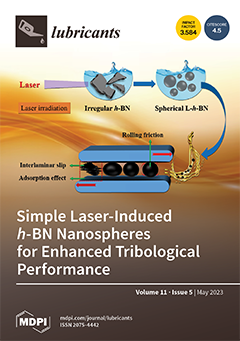In winter sports, the equipment often comes into contact with snow or ice, and this contact generates a force that resists motion. In some sports, such as cross-country skiing, this resistive force can significantly affect the outcome of a race, as a small
[...] Read more.
In winter sports, the equipment often comes into contact with snow or ice, and this contact generates a force that resists motion. In some sports, such as cross-country skiing, this resistive force can significantly affect the outcome of a race, as a small reduction in this force can give an athlete an advantage. Researchers have examined the contact between skis and snow in detail, and to fully understand this friction, the entire ski must be studied at various scales. At the macro scale, the entire geometry of the ski is considered and the apparent contact between the ski and the snow is considered and at the micro-scale the contact between the snow and the ski-base textures. In the present work, a method for characterising the contact between the ski-base texture and virtual snow will be presented. Six different ski-base textures will be considered. Five of them are stone-ground ski bases, and three of them have longitudinal linear textures with a varying number of lines and peak-to-valley heights, and the other two are factory-ground “universal” ski bases. The sixth ski base has been fabricated by a steel-scraping procedure. In general, the results show that a ski base texture with a higher
value has less real contact area, and that the mutual differences can be large for surfaces with similar
values. The average interfacial separation is, in general, correlated with the
value, where a “rougher” surface exhibits a larger average interfacial separation. The results for the reciprocal average interfacial separation, which is related to the Couette type of viscous friction, were in line with the general consensus that a “rougher” texture performs better at high speed than a “smoother” one, and it was found that a texture with high
and
values resulted in a low reciprocal average interfacial separation and consequently low viscous friction. The reciprocal average interfacial separation was found to increase with increasing real contact area, indicating a correlation between the real area of contact and the Couette part of the viscous friction.
Full article





